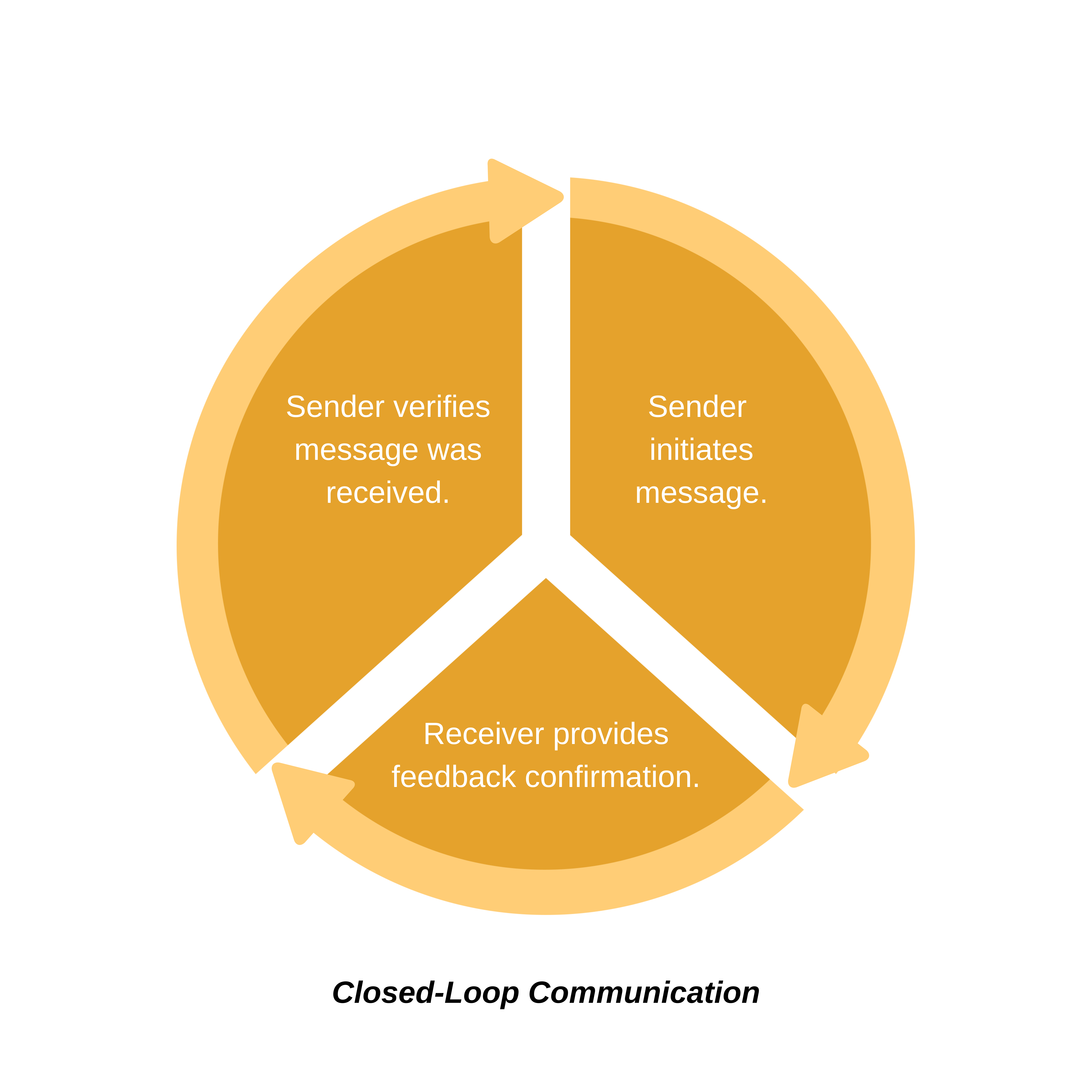Communication: How to Communicate
Effective communication plays an essential role during the resuscitation of the newly born. The team should use a closed-loop communication technique. This technique avoids misunderstanding in the delivery of vital information.
Key Takeaway
The Neonatal Resuscitation team must use closed-loop communication techniques to effectively and safely resuscitate the baby.

Closed-Loop Communication
In closed-loop communication, the sender delivers a message to a specified receiver. The receiver then repeats the order back to the sender. The team leader confirms that the receiver has relayed the correct message back.
After the team member confirms that they have performed the task, the team leader can issue another order, starting the closed-loop communication cycle once again.
The team leader must convey clear messages. Clear messaging occurs when the speaker is:
- concise
- direct and to the point
- understandable
- using a controlled tone
Members must voice their concerns regarding the leader’s interventions, especially if there is a possible mistake.
The communication must be relayed in a friendly voice, avoiding any animosity toward each other. No matter the outcome, the team leader must acknowledge everyone for a job well done.
Example of closed-loop communication:
The team leader (Jane) requests that a team member (John) insert an umbilical line to prepare for medication administration.
- Leader: “John, please insert an umbilical IV line.”
- Team Member: “Jane, I am inserting an umbilical IV line now.”
- Leader: “John will insert an umbilical IV line, confirmed.”
- Team Member: “Jane, the umbilical IV line is properly inserted, and we have a good flow.”
Mutual Respect
A team must function like a well-oiled machine. Superior performance necessitates mutual respect among its members. The team members provide moral support to each other, especially if a member is not performing well and needs coaching or assistance. Everyone must respect each other no matter the title, experience, or additional training of other members.
Accurate Documentation
The accurate and concise recording of all events occurring during the resuscitation of a newly born is critical for clinical decision-making. After resuscitation, the team uses the data for debriefing and continuous quality improvement. Continued practice and preparations can make this process easy despite the sense of urgency during resuscitation.
The team documents interventions as they happen and when they happen. The resuscitation team must use one clock as a reference when performing resuscitation. The event recorder must not have any other tasks. An experienced team member should serve as the recorder during the resuscitation.
Team members must announce what they are doing as they do it so the event recorder can document each action as it occurs. Simple observation by the recorder will not suffice because team members perform tasks simultaneously.

Charting provides documentation of events occurring during resuscitation.